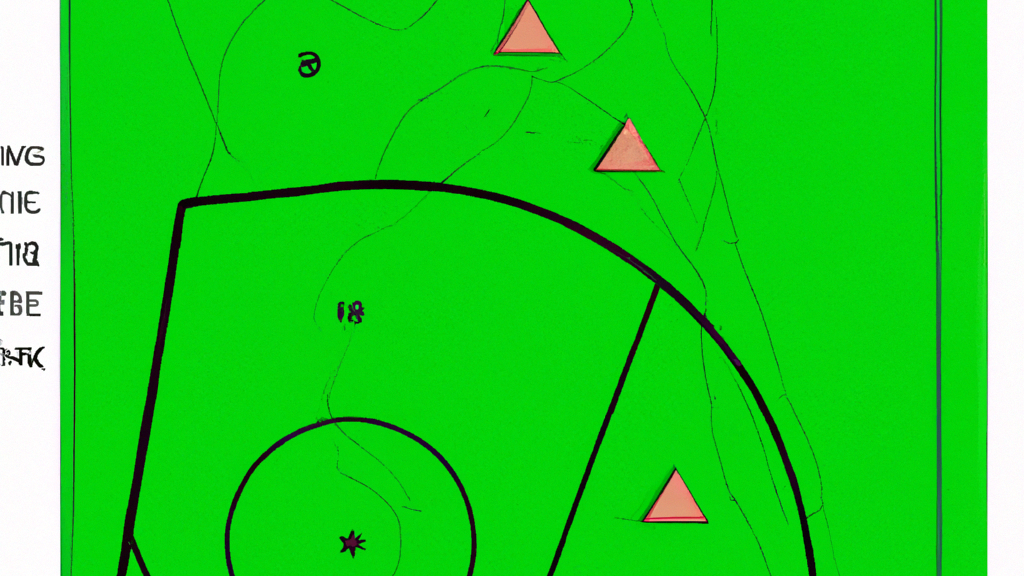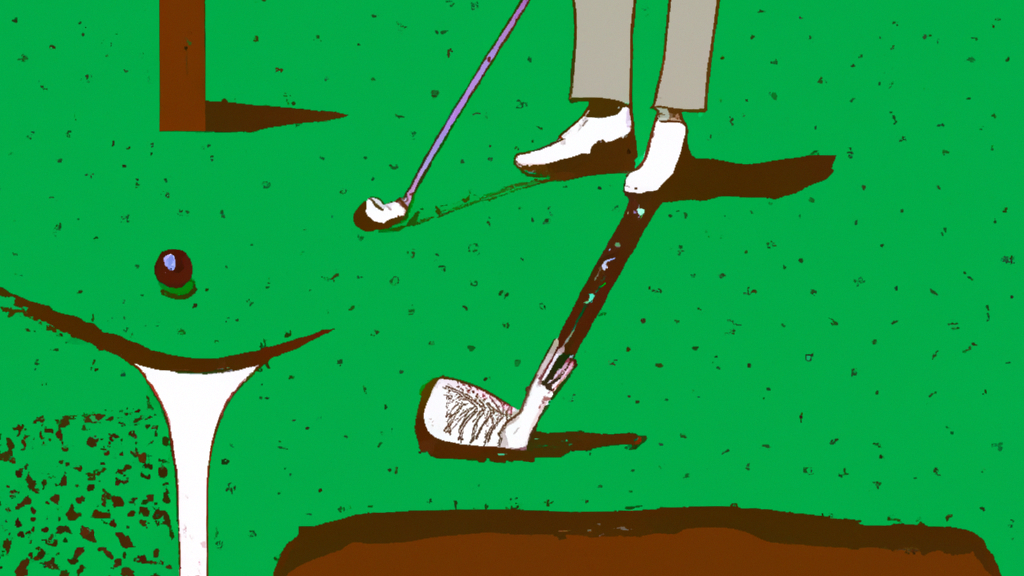THE BENEFITS OF USING PERMEABLE SURFACES IN GOLF COURSE MANAGEMENT
Golf courses are a vital part of the country club life and professional golf. However, maintaining these courses can be a challenging task, especially when it comes to managing water runoff. Traditional surfaces like concrete and asphalt can cause water to pool, leading to erosion and damage to the course. This is where permeable surfaces come in. Permeable surfaces are designed to allow water to pass through them, reducing the risk of water damage and erosion. In this blog post, we will explore the benefits of using permeable surfaces in golf course management.
From reducing water runoff to improving the overall health of the course, permeable surfaces offer a range of advantages that can help golf courses thrive. So, if you’re looking for ways to improve your golf course management, read on to learn more about the benefits of using permeable surfaces.

Golf Course Management: The Benefits of Permeable Surfaces
Golf courses are a vital part of the golfing and country club life. They are also a significant investment for professional golfers and golf course owners. Maintaining a golf course is a challenging task, and it requires a lot of resources, including water, fertilizers, and pesticides. However, the use of permeable surfaces in golf course management can help reduce the environmental impact of golf courses while also improving their playability and aesthetics.
What are Permeable Surfaces?
Permeable surfaces are surfaces that allow water to pass through them. They are designed to reduce runoff and promote infiltration, which helps to recharge groundwater and prevent erosion. Permeable surfaces can be made from a variety of materials, including gravel, sand, and porous concrete. They are commonly used in parking lots, sidewalks, and driveways, but they can also be used in golf course management.
The Benefits of Permeable Surfaces in Golf Course Management
- Reduced Water Usage: One of the main benefits of using permeable surfaces in golf course management is that they can help reduce water usage. Golf courses require a lot of water to maintain their lush green appearance. However, much of this water is lost due to runoff and evaporation. Permeable surfaces can help reduce runoff by allowing water to infiltrate into the ground, where it can be stored and used by plants. This can help reduce the amount of water needed to maintain the golf course, which can save money and reduce the environmental impact of golf courses.
- Reduced Use of Fertilizers and Pesticides: Another benefit of using permeable surfaces in golf course management is that they can help reduce the use of fertilizers and pesticides. Fertilizers and pesticides are commonly used on golf courses to promote plant growth and control pests. However, these chemicals can be harmful to the environment and can contaminate groundwater. Permeable surfaces can help reduce the need for fertilizers and pesticides by promoting healthy plant growth and reducing the habitat for pests. This can help reduce the environmental impact of golf courses and improve the health of the surrounding ecosystem.
- Improved Playability and Aesthetics: Permeable surfaces can also improve the playability and aesthetics of golf courses. Traditional golf course surfaces, such as grass and sand, can become compacted over time, which can reduce their ability to absorb water and nutrients. This can lead to poor drainage and unhealthy plant growth. Permeable surfaces, on the other hand, are designed to promote infiltration and prevent compaction. This can help improve drainage and promote healthy plant growth, which can improve the playability and aesthetics of the golf course.
- Reduced Heat Island Effect: In addition to these benefits, permeable surfaces can also help reduce the heat island effect. The heat island effect is a phenomenon where urban areas are significantly warmer than surrounding rural areas due to the absorption and retention of heat by buildings and pavement. Golf courses can contribute to the heat island effect by using traditional surfaces, such as asphalt and concrete. Permeable surfaces, on the other hand, can help reduce the heat island effect by allowing water to infiltrate into the ground, where it can help cool the surrounding area.
Types of Permeable Surfaces for Golf Course Management
There are several types of permeable surfaces that can be used in golf course management:
- Porous Asphalt: Porous asphalt is a type of asphalt that is designed to allow water to pass through it. It is commonly used in parking lots and driveways, but it can also be used on golf courses. Porous asphalt can help reduce runoff and promote infiltration, which can help reduce the environmental impact of golf courses.
- Porous Concrete: Porous concrete is a type of concrete that is designed to allow water to pass through it. It is commonly used in sidewalks and driveways, but it can also be used on golf courses. Porous concrete can help reduce runoff and promote infiltration, which can help reduce the environmental impact of golf courses.
- Gravel: Gravel is a natural material that is commonly used in landscaping and construction. It is also commonly used on golf courses as a base material for paths and cart paths. Gravel can help reduce runoff and promote infiltration, which can help reduce the environmental impact of golf courses.
Conclusion
In conclusion, the use of permeable surfaces in golf course management can provide several benefits, including reducing water usage, reducing the use of fertilizers and pesticides, improving the playability and aesthetics of the golf course, and reducing the heat island effect. By incorporating permeable surfaces into golf course management, golf course owners and managers can help reduce the environmental impact of golf courses while also improving their playability and aesthetics.

- Water Resource Management BMPs for Golf Courses in Louisiana …
Permeable paving consists of the use of pavement that allows for the infiltration of water, either directly through the porous material or through the spaces … - 7 Cultural Practices – Best Management Practices for New York …
Maintain turf with high shoot density to minimize runoff and maximize infiltration. Manage the surface accumulation of organic matter to maintain a permeable … - Greening Golf
Golf courses are important for more than recreation, however. They have many environmental benefits due to their large areas of permeable surfaces and … - Turfgrass Management for Protecting Surface Water Quality …
(57,60) An average golf course of 150 acres can absorb 12 million gallons of … The increased surface runoff associated with increasing urbanization has … - Permeable Surfaces and Driveways
Feb 2, 2015 … even lawns and golf courses – it stays on … Flow Control Best Management Practices … Whether you are using permeable surfaces. - Porous Pave Introduces Sand Guard – Golf Course Industry
Feb 8, 2017 … Permeable paving material protects golf course bunkers with a solid … “As a Porous Pave solution, Sand Guard offers important advantages. - To cover, or not to cover (Turfgrass management) – Golf Course …
Using green covers has several benefits. … The study showed that color on putting surfaces was enhanced significantly by the use of turf covers, … - Resources :: NC State Stormwater Engineering Group
Maintenance and Installation of SCMs/BMPs. Metrics and Nomenclature for SCM/BMP Evaluation Permeable Pavement & Pervious Friction Course Overlays - Blog – Page 4 of 9 – Envirobond Products Corp.
Sep 18, 2017 … Golf course landscape materials that work naturally with the … Using permeable decomposed granite surfaces with stabilizers such as … - Stormwater and Water Quality | Penn State Extension
Items 1 – 25 of 33 … Find resources on stormwater management and water quality. Discover tips on green infrastructures, stream health, infiltration surfaces, …
Interesting facts about The Benefits of Using Permeable Surfaces in Golf Course Management
- The first recorded game of golf was played in Scotland in the 15th century.
- Golf is one of only two sports to have been played on the moon, with astronaut Alan Shepard hitting a ball during the Apollo 14 mission.
- The longest hole in professional golf is the 7th hole at Satsuki Golf Club in Japan, measuring a whopping 964 yards.
- Augusta National Golf Club, home of The Masters tournament, was originally an indigo plantation before being converted into a golf course by Bobby Jones and Alister MacKenzie.
- In some countries such as China and North Korea, playing golf has been banned due to its association with wealth and elitism.
- Professional golfer Tiger Woods has won over $120 million dollars throughout his career from prize money alone – not including endorsements or sponsorships.
- Caddies were originally used for carrying clubs but also served as advisors on strategy and reading greens before yardage books became commonplace in modern times





